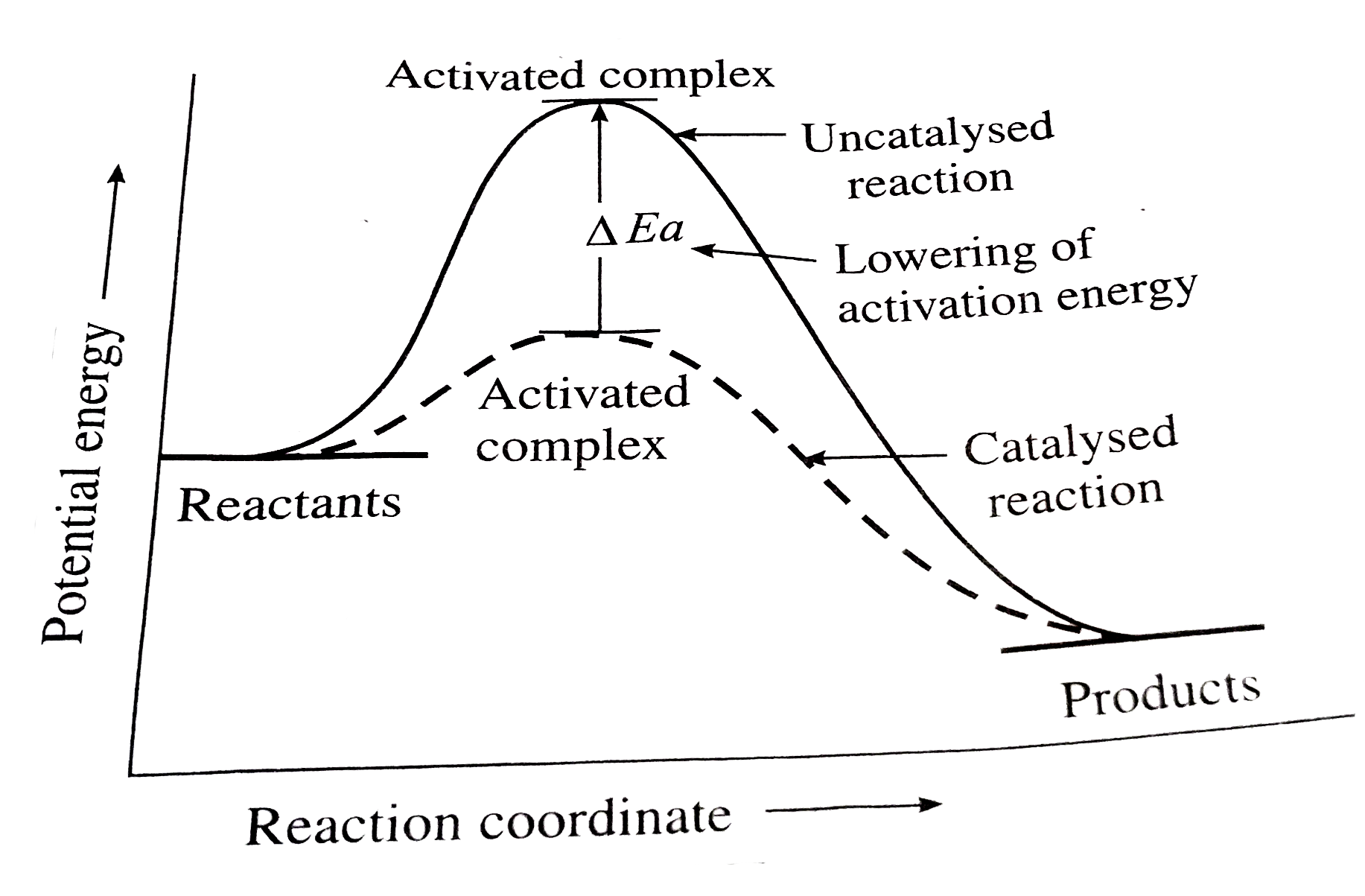Explain with the help of potential energy barrier how
does a catalyst increase the speed of a reaction ?
(1) A catalyst is a substance, when added to the reactants,
increases the rate of the reaction without veing consumed.
(2) The catalyst provides alternaative and lower energy path or
mechanism for the reaction.
(3) In the presence of
the catalyst, the activation
energy of the reaction is
lowered. The height of
activation energy barrier is
less than that in the
uncatalysed reaction.
(4) Due to lowering of
energy of activaion, (Ea)
the number of molecules
possessing Ea increases, hence the rate of the reaction increases.
(5) The rate constant =k=A×e−Ea/RT where A is a frequency
factor and hence the rates of the catalysed reaction are higher than
those of uncatalysed reactions.
(6) The catalyst does not change the extent of the reaction but
hastens the reaction.

Similar Questions
Knowledge Check
(A) A reaction cannot become fast by itself unless a catalyst is added .
(R) A catalyst always increases the speed of a reaction.Aif both assertion and reason are true and the reason is the correct explanation of the assertion.Bif both assertion and reson are true but reason is not the correct explanation of the assertion.CIf assertion is true but reason is false.DIf the assertion and reason both are false.(A) A reaction cannot become fast by itself unless a catalyst is added .
(R) A catalyst always increases the speed of a reaction.AIf both (A) and (R) are true and (R) is the correct explanation of (A).BIf both (A) and (R) are true but (R) is not the correct explanation of (A).CIf (A) is correct but (R) is incorrect.DIf (A) and (R) are both incorrect.Arrhenius studied the effect of temperature on the rate of a reaction and postulated that rate constant varies with temperature exponentially as k=Ae−Ea/RT. For most of the reactions, it was found that the temperature coefficient of the reaction lies between 2 to 3. The method is generally used for finding the activation energy of a reaction. Keeping temperature constant, the effect of catalyst on the activation energy has also been studied by studying how much the rate of reaction changes in the presence of catalyst. In most of the cases, it is observed that catalyst lowers the activation energy barrier and increases the rate of reaction.
If the rate of reaction grows 15.6 times on increasing the temperature by 30 K, the temperature coefficient of the reaction will be nearlyA2B2.5C3.0D3.5
How does the height of potential barrier vary with increase in temp
View SolutionA poistive catalyst increases the activation energy of the reaction.
View SolutionA poistive catalyst increases the activation energy of the reaction.
View SolutionA catalyst lowers the activation energy of a reaction in such a manner that rate constant at 27∘C uncatalysed reaction equals the rate constant at .−73∘C for cataysed reaction . By how many kJ activation energy barrier is reduced by catalyst? Activation energy for the reaction is 24kJ.
View SolutionExplain with the help of a diagram, how depletion region and potential barrier are formed in a junction diode.
If a small voltage is applied to a p-n junction diode how will the barrier potential be affected when it is (i) forward biased and (ii) reverse biased?
View Solution
